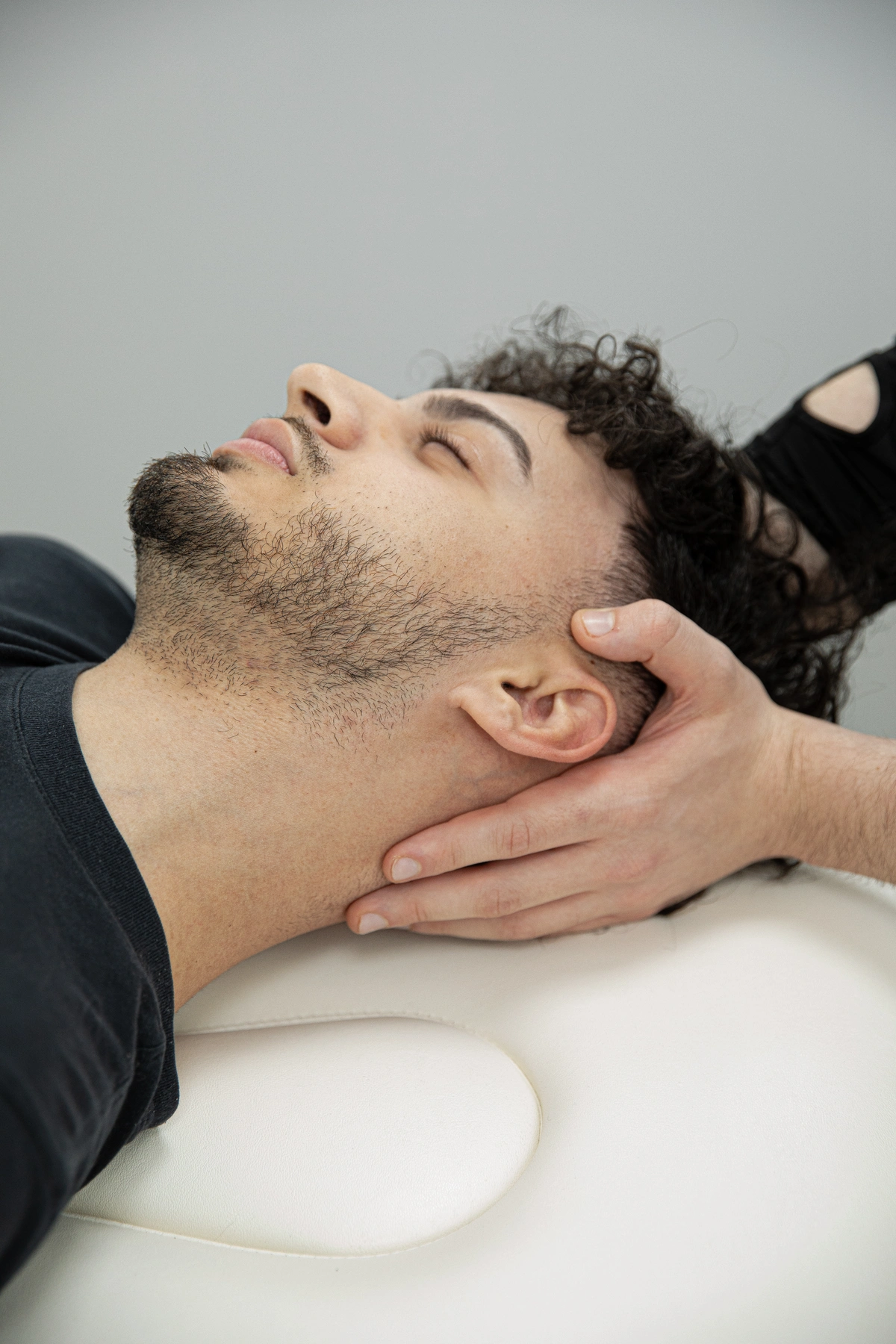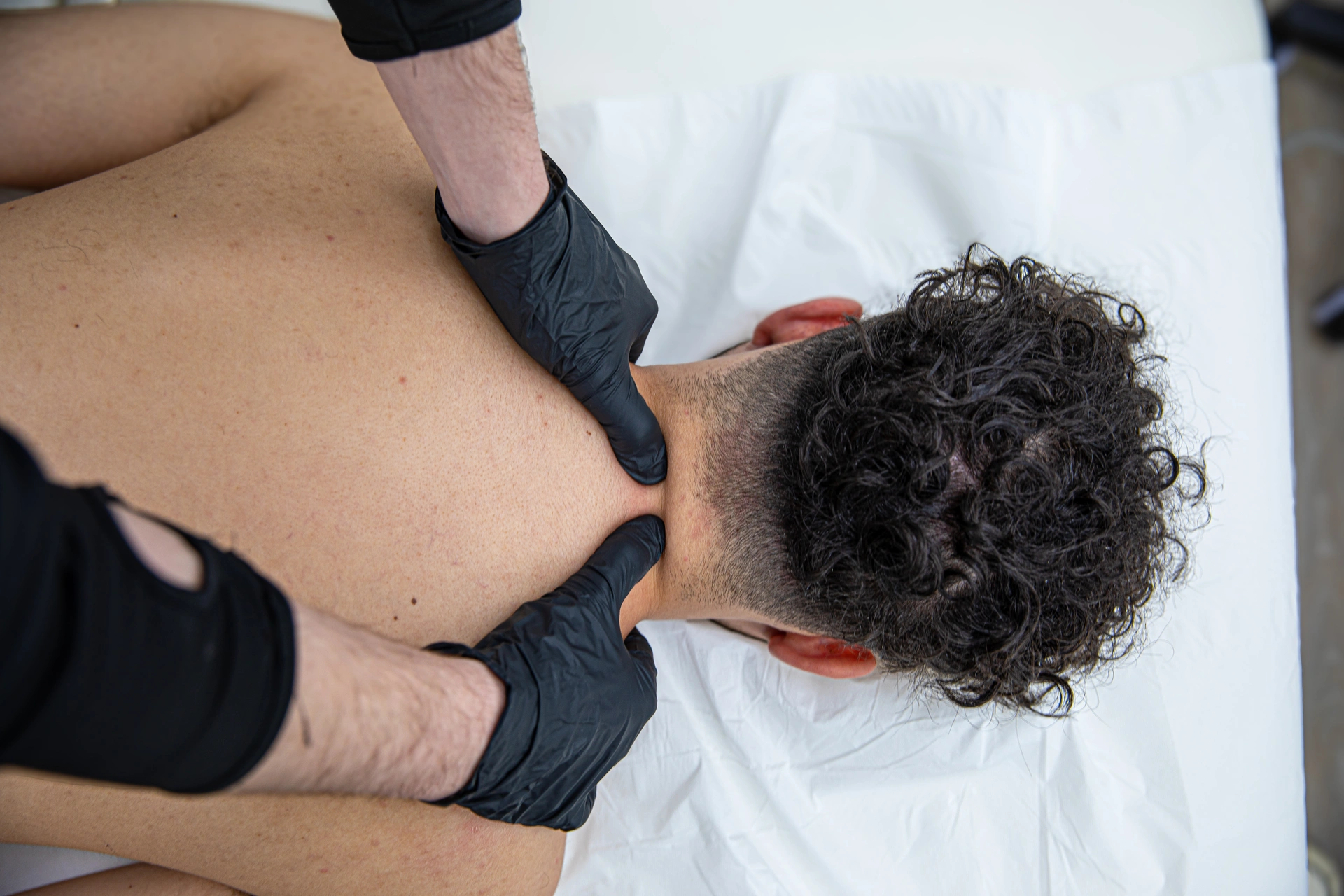Headaches

What is Headaches?
Headaches are a prevalent medical condition characterised by pain or discomfort in the head or upper neck region. They can vary in severity, duration, and frequency, and may be accompanied by other symptoms such as nausea, sensitivity to light or sound, and dizziness. There are several types of headaches, including tension headaches, migraines, cluster headaches, and cervicogenic headaches, each with their own distinct features and underlying causes.
Patient pain symptoms/presentation
- Tension headaches: Often described as a dull, aching pain or pressure around the head, typically on both sides. Patients may also experience tightness or stiffness in the neck and shoulders.
- Migraines: Characterised by intense, throbbing pain, usually on one side of the head. Migraines can be accompanied by nausea, vomiting, and sensitivity to light and sound. Some individuals experience an "aura" before the onset of a migraine, which can include visual disturbances or tingling sensations.
- Cluster headaches: These are excruciatingly painful headaches that occur in clusters or groups, often around one eye. They typically last for a relatively short duration but can occur multiple times a day over a period of weeks or months.
- Cervicogenic headaches: Originating from the neck, these headaches are often felt on one side of the head and may be accompanied by neck pain and stiffness. They can be triggered or exacerbated by certain neck movements or positions.


Tests to rule in/out pathology
- Physical examination: A thorough assessment of the head, neck, and shoulders can help identify any areas of tenderness, muscle tension, or restricted movement that may be contributing to the headaches.
- Neurological examination: This may include tests to assess sensory perception, reflexes, and muscle strength to rule out any underlying neurological conditions.
- Imaging studies: In some cases, imaging tests such as MRI or CT scans may be ordered to rule out serious underlying causes of headaches, such as tumours or structural abnormalities.
Treatment Methods
- Pain management: Over-the-counter pain medications such as paracetamol or ibuprofen can help alleviate mild to moderate headaches. For more severe headaches, prescription medications such as triptans or ergotamines may be prescribed.
- Lifestyle modifications: Identifying and avoiding triggers such as stress, poor posture, dehydration, or certain foods can help prevent headaches. Regular exercise, adequate sleep, and relaxation techniques such as deep breathing or meditation may also be beneficial.
- Physiotherapy: Physiotherapy techniques such as manual therapy, exercise prescription, postural correction, and ergonomic advice can help improve neck and shoulder function, reduce muscle tension, and alleviate cervicogenic headaches.


Advice from a physiotherapist's perspective
- Maintain good posture: Encourage patients to be mindful of their posture, particularly when sitting for long periods or using electronic devices. Proper ergonomics can help reduce strain on the neck and shoulders.
- Stay active: Regular exercise, including stretching and strengthening exercises for the neck and shoulder muscles, can help improve posture, reduce muscle tension, and prevent headaches.
- Manage stress: Stress can exacerbate headaches, so teaching patients stress management techniques such as relaxation exercises, mindfulness, or stress-reducing activities can be beneficial.
- Stay hydrated: Dehydration can contribute to headaches, so encourage patients to drink an adequate amount of water throughout the day
- Seek help: Encourage patients to seek professional help if their headaches are severe, persistent, or significantly impacting their quality of life. A multidisciplinary approach involving physiotherapy, medication, and other interventions may be necessary for effective management.




